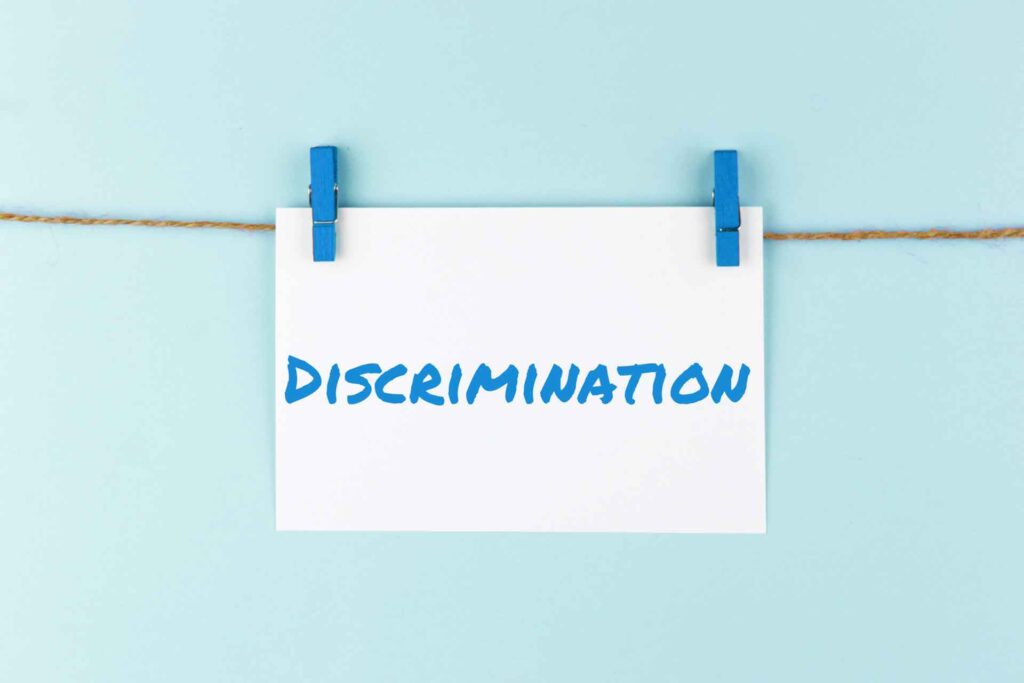

Racial discrimination is a serious problem for Black women at work. They face both racism and sexism, which affect their opportunities, pay, and well-being.
In this blog post, we will help you understand this issue and how to address it. We will also share some inspiring stories of Black women who have overcome workplace challenges.
1. The Intersection of Racism and Sexism
Imagine walking into a room where you’re not only the only woman, but also the only Black person. Now imagine that room is your workplace. Every. Single. Day.
Welcome to the world of intersectionality, a term coined by Kimberlé Crenshaw to describe the overlap of race and gender discrimination.
Black women often find themselves at this intersection, facing both racism and sexism in their professional lives. It’s like trying to juggle while riding a unicycle on a tightrope…over a shark tank! (Okay, maybe not that dramatic, but you get the point.)
For example, a study found that resumes with traditionally Black names received fewer callbacks than those with traditionally white names. Add gender to the mix, and Black women are often doubly disadvantaged.
But don’t despair! Awareness is the first step towards change. By understanding intersectionality, we can start to dismantle these barriers and create a more equitable workplace.
2. The Impact of Stereotypes
Stereotypes are like that annoying song that gets stuck in your head. No matter how hard you try, you can’t shake it off. And just like that song, stereotypes about Black women can be pervasive and hard to dispel.
One common stereotype is the “Angry Black Woman”. This stereotype paints Black women as aggressive, confrontational, and overly emotional. It can affect how Black women are perceived at work and limit their opportunities for advancement.
But here’s the twist: Black women are not inherently angry. Shocking, right? They are human beings with a full range of emotions.
So next time you see a Black woman expressing her opinion at work, don’t label her as angry. Listen to what she has to say.
3. Microaggressions in the Workplace
Microaggressions are like mosquitoes. They’re small, they’re annoying, and they can leave you feeling itchy and uncomfortable.
In the workplace, microaggressions can take the form of subtle insults or dismissive gestures that belittle or exclude Black women.
For instance, constantly confusing two Black colleagues because they “look alike” is a microaggression. So is commenting on a Black woman’s natural hair in a professional setting.
The good news? We can all play a part in swatting away these workplace mosquitoes. By being aware of our words and actions, we can create a more respectful and inclusive environment for everyone.
4. Hair Discrimination
Ever been told your hair is “too much” for the office? For Black women, this isn’t just a bad hair day. It’s a form of racial discrimination known as hair discrimination.
Hair discrimination involves unfair treatment based on hairstyle or hair texture. For Black women, this often means facing bias for wearing their hair in natural styles like afros, braids, or locs.
Imagine being told your natural hair is “unprofessional” or “distracting”. It’s like telling a peacock to hide its feathers! But unlike peacocks, Black women aren’t here for display. They’re here to work and contribute their skills and talents.
Thankfully, there’s been progress in combating hair discrimination. The CROWN Act, for example, is a law that prohibits race-based hair discrimination in the US. It’s a step towards ensuring that Black women can show up as their authentic selves at work.
5. Resilience and Achievements
Despite these challenges, Black women continue to break barriers and make strides in the workplace. They’re CEOs, scientists, artists, politicians – you name it!
Take Ursula Burns for instance. She was the first Black woman to serve as CEO of a Fortune 500 company. Or Mae Jemison, the first Black woman to travel in space. Talk about reaching for the stars!
These stories of resilience and achievement serve as a powerful reminder: Black women are not defined by the discrimination they face, but by their strength, talent, and determination.
6. Creating an Inclusive Work Environment
Creating an inclusive work environment isn’t just about avoiding discrimination. It’s about celebrating diversity and ensuring everyone feels valued and respected.
This means implementing policies that promote equality and inclusivity. It also means fostering a culture where everyone – from the intern to the CEO – is committed to respecting and valifying each other’s experiences.
Remember, an inclusive workplace isn’t just good for Black women. It’s good for everyone. Because when we lift each other up, we all rise together.
Conclusion
And there you have it! A deep dive into the world of racial discrimination against Black women at work.
We’ve explored the intersection of racism and sexism, the impact of stereotypes and microaggressions, and the issue of hair discrimination.
We’ve also celebrated the resilience and achievements of Black women and discussed how we can all contribute to creating a more inclusive work environment.
But remember, this is just the tip of the iceberg. There’s so much more to learn and do. So let’s keep the conversation going, challenge our biases, and work together to create workplaces where everyone is treated with respect and dignity.
Because at the end of the day, we’re all just trying to make a living, right? And wouldn’t it be nice if we could do that without having to worry about racial discrimination? Now that’s a world worth striving for!
So whether you’re a Black woman dealing with these issues firsthand, an ally looking to support your colleagues, or just someone trying to learn more, we hope this blog post has been informative and helpful. And remember – change starts with you.
FAQ on Racial Discrimination
Q: What is the CROWN Act? A: The CROWN Act is a law in the US that prohibits race-based hair discrimination.
Q: Who coined the term intersectionality? A: Kimberlé Crenshaw, a legal scholar, coined the term intersectionality.
Q: What are some examples of microaggressions in the workplace? A: Examples include subtle insults, dismissive gestures, or comments that belittle or exclude individuals based on their race or gender.
Q: How can I support my Black female colleagues at work? A: You can support by respecting their experiences, challenging biases, and promoting policies that ensure equality and inclusivity.
Q: Who was the first Black woman to serve as a CEO of a Fortune 500 company? A: Ursula Burns was the first Black woman to serve as CEO of a Fortune 500 company.
Last modified: October 16, 2023



